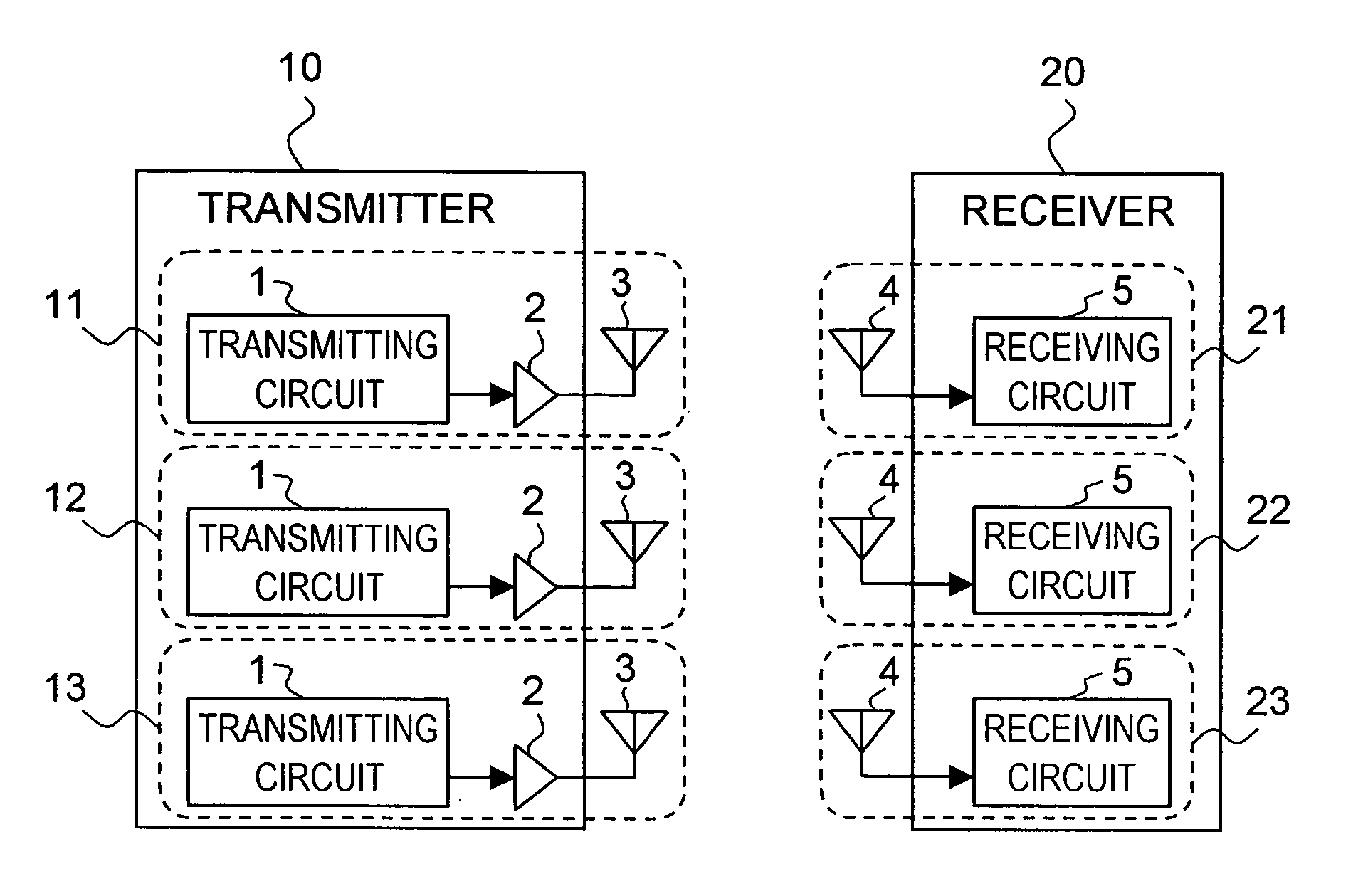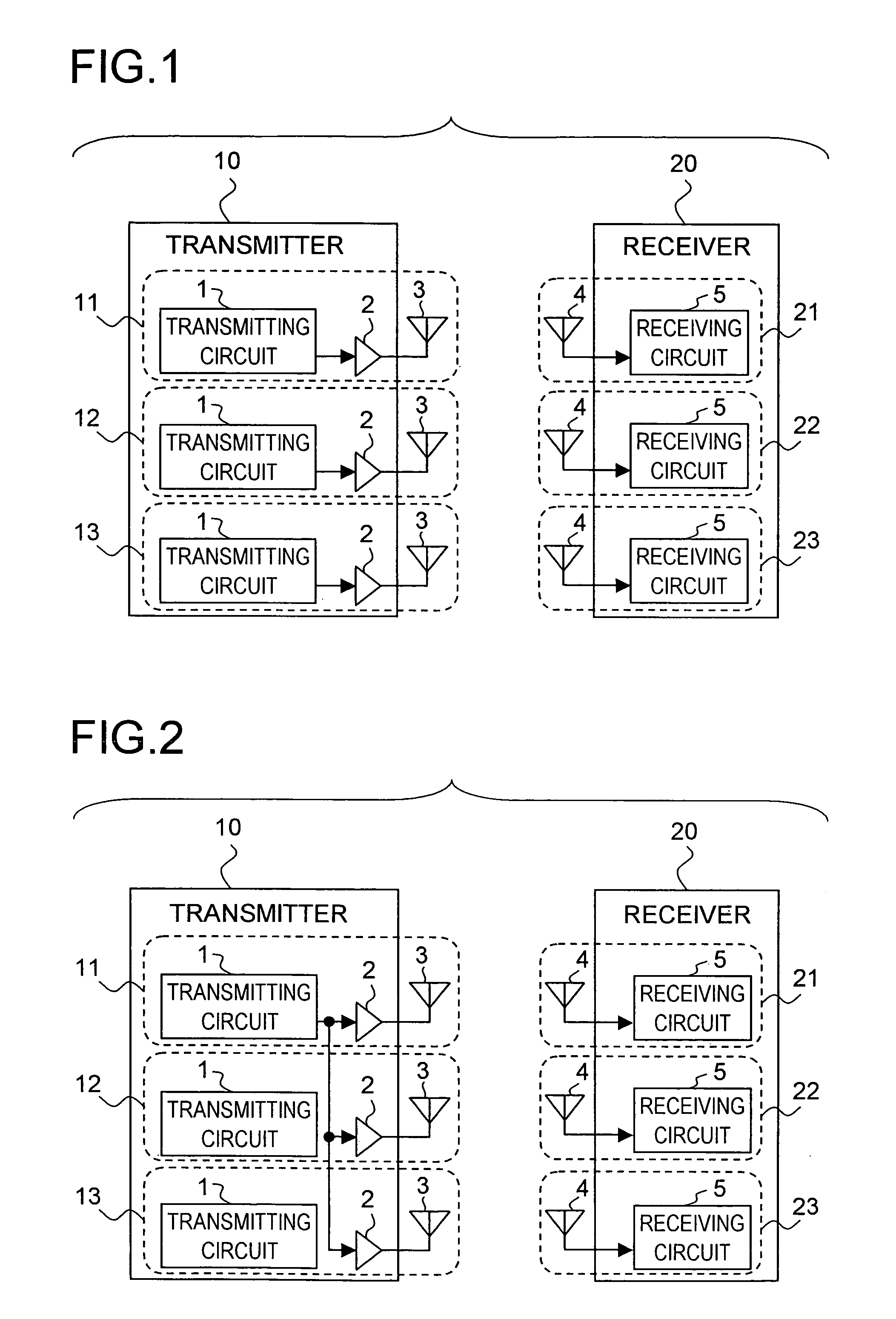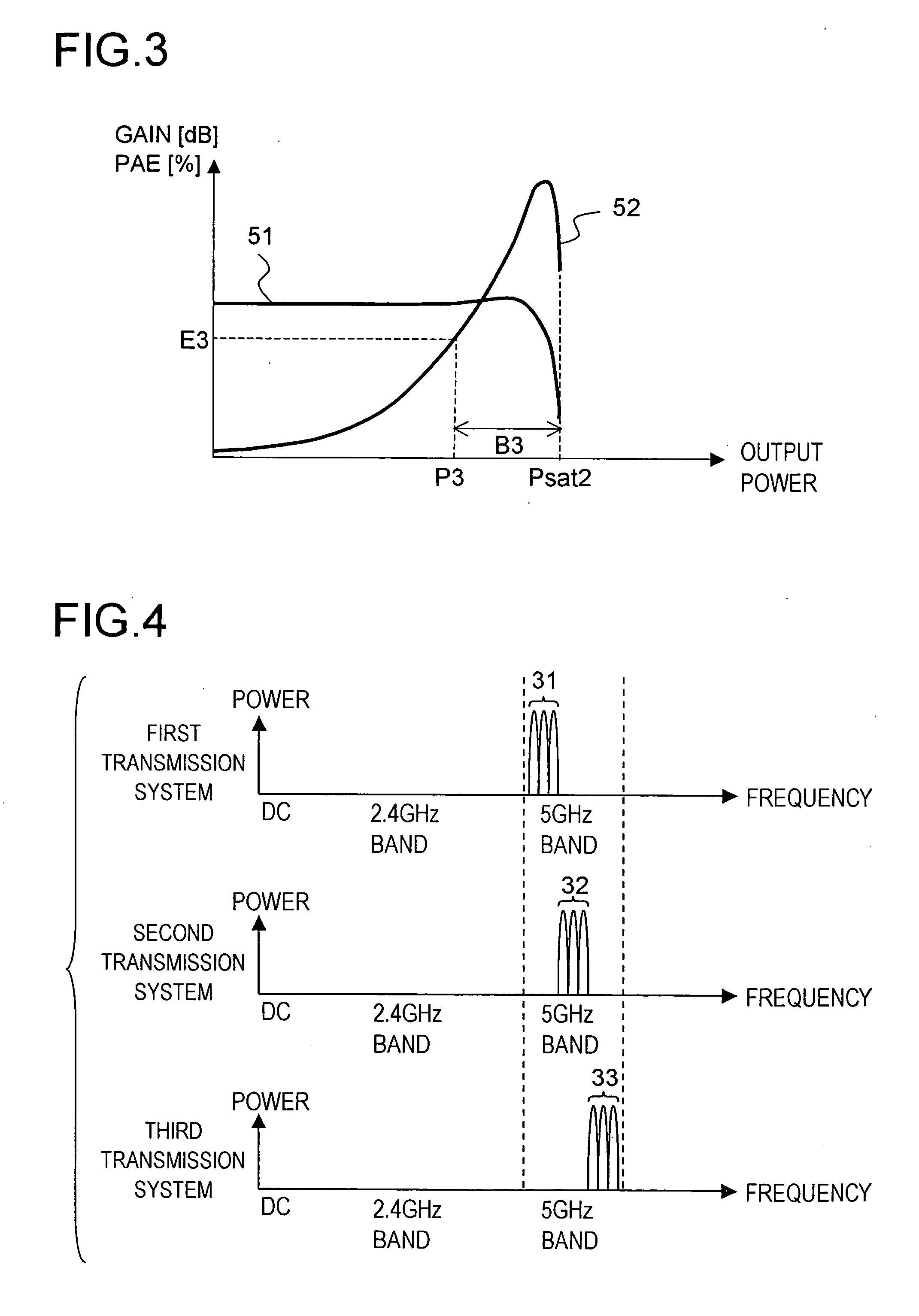Wireless communication apparatus
a communication apparatus and wireless technology, applied in multiplex communication, electromagnetic wave modulation, high-level techniques, etc., can solve the problems of fluctuation in operating output power, degradation in power added efficiency of transmission amplifiers, etc., and achieve the effect of improving the power added efficiency of transmission power amplifiers
- Summary
- Abstract
- Description
- Claims
- Application Information
AI Technical Summary
Benefits of technology
Problems solved by technology
Method used
Image
Examples
first embodiment
[0057] A first embodiment of a wireless communication apparatus according to the present invention will be described below with reference to the accompanying drawings. FIG. 1 is a block diagram showing the configuration of the wireless communication apparatus according to the first embodiment. In FIG. 1, portions corresponding to those shown in FIG. 7 are provided with the same numerals, and thus description of some of the details thereof may be omitted. The wireless communication apparatus in FIG. 1 includes a transmitter 10 and a receiver 20.
[0058] The transmitter 10 includes three transmission systems: the first transmission system 11 (hereinafter sometimes simply referred to as “transmission system 11”); the second transmission system 12 (hereinafter sometimes simply referred to as “transmission system 12”); and the third transmission system 13 (hereinafter sometimes simply referred to as “transmission system 13”). Each of the transmission systems 11, 12, and 13 roughly include...
second embodiment
[0080] Next, the second embodiment of a wireless communication apparatus according to the present invention will be described below with reference to the accompanying drawings. The configuration of the wireless communication apparatus according to the second embodiment is the same as that of the wireless communication apparatus of the first embodiment; therefore, it is omitted from the description. Moreover, the MIMO operation in the second embodiment is the same as that in the first embodiment. The wireless communication apparatus of the second embodiment is different from the wireless communication apparatus of the first embodiment in that, when the OFDM modulation method is adopted in the non-MIMO operation, the method of dispersing the power is further optimized.
[0081] Thus, the non-MIMO operation, the unique feature of this embodiment, will be described below. The configuration of the wireless communication apparatus of this embodiment in the non-MIMO operation is the same as ...
third embodiment
[0092] The second embodiment described above is widely applicable to communication systems that handle a multicarrier signal including two or more subcarriers, and not limited to the OFDM modulation method. Hereinafter, a modification of the second embodiment in a case where a VSF-CDMA method is adopted will be described as the third embodiment.
[0093]FIG. 6 schematically shows the spectrum of a signal transmitted from the transmitter 10 when the VSF-CDMA method is adopted. This signal is formed by arranging on the frequency axis two carriers' worth of spectra 61 and 62 that correspond to a CDMA signal having a band width of 20 MHz, thus having a total band width of 40 MHz. The VSF-CDMA method is also one type of multicarrier transmission methods that divide data to be transmitted into a plurality of carrier waves for transmission. The data to be transmitted is transmitted as a multicarrier signal having the two divided subcarriers (61, 62).
[0094] When the signal as shown in FIG. 6...
PUM
 Login to View More
Login to View More Abstract
Description
Claims
Application Information
 Login to View More
Login to View More - R&D
- Intellectual Property
- Life Sciences
- Materials
- Tech Scout
- Unparalleled Data Quality
- Higher Quality Content
- 60% Fewer Hallucinations
Browse by: Latest US Patents, China's latest patents, Technical Efficacy Thesaurus, Application Domain, Technology Topic, Popular Technical Reports.
© 2025 PatSnap. All rights reserved.Legal|Privacy policy|Modern Slavery Act Transparency Statement|Sitemap|About US| Contact US: help@patsnap.com



